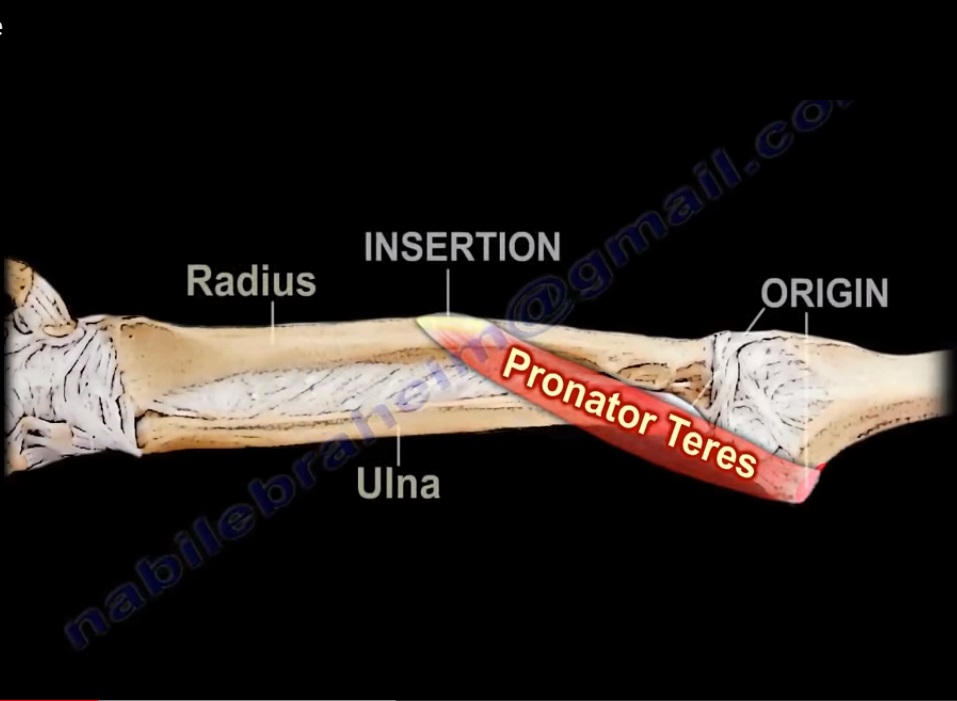Courtesy: Prof Nabil Ebraheim, University of Toledo, Ohio, USA
ANATOMY OF PRONATOR TERES MUSCLE
• Muscle located in the forearm
• Origin: from 2 heads- Superficial and deep head
Superficial head which is the humeral head arises from medial epicondyle of the humerus.
Deep head which is the ulnar head arises from the medial border of the coronoid process of the ulna.
• Insertion: into to the middle of the lateral surface of the shaft of the radius.
• Function: to pronate the forearm(along with pronator quadratus),so that the palm turn posterior/down, Pronation of forearm at the elbow, elbow flexion.
• Forearm has a normal range of 160 to 180 degrees
• When the fracture occurs below the insertion of the pronator teres muscle,the proximal fragment is usually pulled into pronation.
• Sometimes a decrease in rotation motion by 50 degrees may not be noticed. However every attempt should be made to reduce the forearm fracture well, especially fracture of the proximal radius(prone to malrotation)
• The bicipital tuberosity of the radius is used as a guide to the rotation of the proximal radius.
• Compare the position of the thumb to the position of the radial tuberosity.
• Nerve supply: MEDIAN NERVE.
• In condition of high radial nerve palsy, pronator teres muscle is used
• Extension of the wrist ,which is impaired by radial nerve palsy(wrist drop),is improved by transfer of the pronator teres to the extensor Carpi radialis brevis muscle.
• Relation:
Median nerve passes between the 2 heads of the pronator teres .The ulnar head (deep) separates median nerve from the ulnar artery.
Deep head:- median nerve passes above the deep head, ulnar artery passes below the deep head
• Posterior interosseous nerve (deep branch):-enters the extensor compartment of the forearm between 2 heads of the supinator muscle(can be compressed at the arcade of Frohse.
• Ulnar nerve:-enters the forearm by passing through the 2 heads of flexor carpi ulnaris muscle.
• Median nerve:- enters the forearm by passing through the 2 heads of the pronator teres
muscle.
• The condition of the pronator teres syndrome can occur due to entrapment of the median nerve between 2 heads of the pronator teres muscle.
• Other causes may cause pronator teres syndrome, however entrapment of the median nerve between 2 heads of the pronator teres is an important cause

Leave a Reply